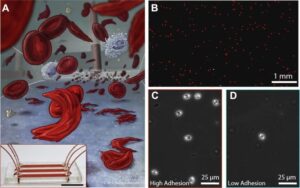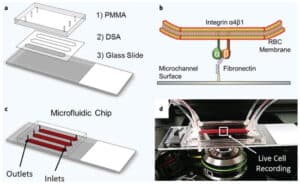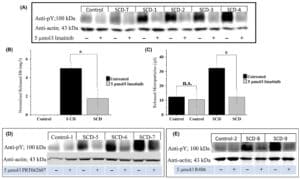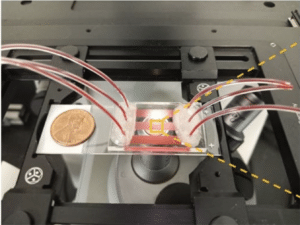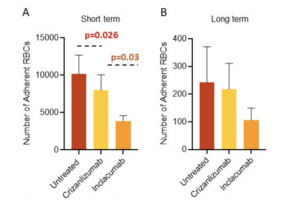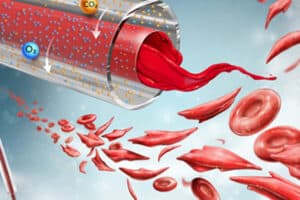Sickle cell disease (SCD) afflicts millions of people worldwide and is associated with considerable morbidity and mortality. Chronic and acute vaso-occlusion are the clinical hallmarks of SCD and can result in pain crisis, widespread organ damage, and early mortality. Even though the molecular underpinnings of SCD were identified more than 60 years ago, there are no molecular or biophysical markers of disease severity that are feasibly measured in the clinic.
Abnormal cellular adhesion to vascular endothelium is at the root of vaso-occlusion. However, cellular adhesion is not currently evaluated clinically. Here, we present a clinically applicable microfluidic device (SCD biochip) that allows serial quantitative evaluation of red blood cell (RBC) adhesion to endothelium-associated protein immobilized microchannels, in a closed and preprocessing-free system.
With the SCD biochip, we have analyzed blood samples from more than 100 subjects and have shown associations between the measured RBC adhesion to endothelium-associated proteins (fibronectin and laminin) and individual RBC characteristics, including hemoglobin content, fetal hemoglobin concentration, plasma lactate dehydrogenase level, and reticulocyte count.
The SCD biochip is a functional adhesion assay, reflecting quantitative evaluation of RBC adhesion, which could be used at baseline, during crises, relative to various long-term complications, and before and after therapeutic interventions. (Translational Research 2016;173:74–91)
Abbreviations: CBC = complete blood count; EDTA = ethylenediaminetetraacetic acid; FCSB = flow cytometry staining buffer; FN = fibronectin; GMBS = N-g-Maleimidobutyryloxy succinimide ester; Hb¼hemoglobin; LDH¼lactatedehydrogenase; LN¼laminin; RBC¼redblood cell; SCD¼sicklecelldisease


